TRANSPORTATION RESEARCH UPDATE

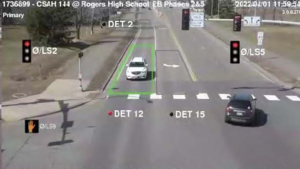
At least 90% of all intersections in Minnesota are actuated, and most rely on sensors embedded in the pavement to detect when a vehicle is waiting at a stoplight. Because these detectors are protected from the elements, they can last for decades. However, they are relatively expensive and aren’t as effective at detecting smaller vehicles and other road users, such as pedestrians, bicycles and motorcycles.
New research considers the benefits and challenges of commercially available vehicle detection systems and provides a number of recommendations to help Minnesota’s cities and counties make the best choices for their budgets and local conditions.
|
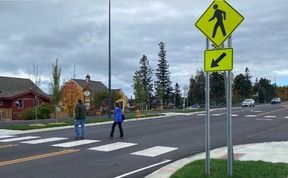
Evolving priorities in road use have prompted communities and transportation agencies to reassess speed limits and how they are set. Conventionally, speed limits have been established based upon 85th percentile speeds on the subject roadways. But the Complete Streets policy initiative places safety and accessibility for all road users at the forefront.
A newly released study demonstrates that road design features have a measurable impact on driving speeds. Two-way left turn lanes, roundabouts, medians and other features evaluated in the study cause drivers to slow down, likely increasing safety for themselves and other road users. With established evidence already indicating that road design elements decrease collisions and serious injury, this new report identifies speed reduction factors for agencies to consider when constructing roads and setting speed limits.
|
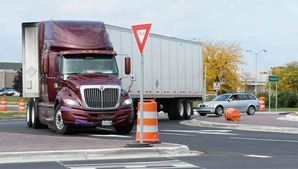
Roundabouts have been shown to significantly decrease serious crashes compared to signalized intersections, leading MnDOT to increase the number of roundabouts on state roads in the past several years. Roundabouts have center islands that separate entering traffic from exiting traffic, reducing the number of potential vehicle conflict points and encouraging slower speeds. While concerns linger over the perceived likelihood that roundabouts cause more commercial vehicle rollover crashes, new research illustrates clear safety benefits for commercial vehicles at roundabouts versus signalized intersections.
After identifying various factors that may impact truck rollover risk, such as intersection design, vehicle configuration and driver behavior, investigators analyzed nearly 300 roundabout locations, comparing crash data to that from signalized intersections with similar traffic volumes. While there are some design factors that may increase rollover risk, heavy commercial vehicles experienced fewer total crashes and serious crashes at roundabouts compared to intersections with traffic lights. Decreases in crashes were even more pronounced following roundabout design guidance changes in 2018 to address commercial vehicle concerns.
|
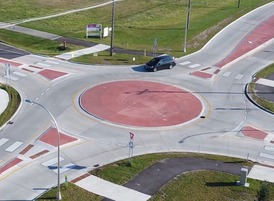
Roundabouts are effective at increasing safety and efficiency of vehicle traffic. Typical roundabout design usually requires a larger footprint than a traditional four-way intersection. More local agencies are implementing mini-roundabouts, which are characterized by a small diameter and fully traversable islands (central island and splitter islands). This guidebook defines mini and compact roundabouts and provides selection criteria on when to use them as well as details regarding the center treatment. The FAQ format provides easy navigation to technical information.
NCITE Webinar: LRRB Mini-Roundabouts
Tuesday, Aug. 6, 10-11 a.m., free to attend
Join Apex Engineering Group for a presentation on the Local Road Research Board project, Mini-Roundabout FAQs. Project team members Michael Marti and Zach Heimer with SRF Consulting Group and Jon Pratt with the City of Detroit Lakes will discuss this new guidance.
Join the Webinar
If you have difficulty accessing the meeting, use the meeting ID and passcode:
- Meeting ID: 251 050 866 163
- Passcode: tGP6ix
|
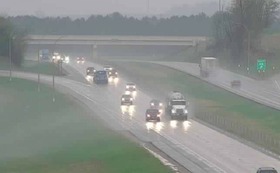
Minnesota’s winters are warming faster than winters in other states in the country and with that comes more frequent and severe heavy rainfall. The durability of roads can suffer when pavement foundations become saturated, which can affect pavement strength and stiffness, and lead to cracking and other pavement damage. A new tool will help MnDOT understand the effects of increased rain on pavement foundation longevity and support resilient road design.
Researchers analyzed test road segments at MnDOT’s MnROAD facility and correlated pavement foundation impacts with historic climate trends, including heavy precipitation. The pavement and climate data, combined with advanced mathematical methodologies, led to the creation of a pavement saturation prediction model. Using the model, researchers produced a geographic information systems vulnerability framework to identify areas to focus maintenance efforts. Engineers can use the framework to explore the impacts to pavement from different rainfall scenarios and for different pavement types to guide the design and maintenance of strong, durable pavements.
|
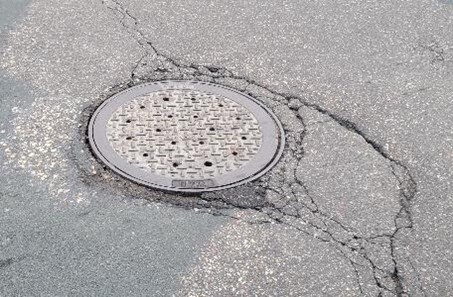
Utility structure covers are typically adjusted to finished grade after either the base course or the surface course of asphalt concrete pavement is placed. In both cases, a relatively small area is removed by sawcut or coring and re-paved after the utility cover has been adjusted. This practice creates an asphalt concrete pavement patch and extra construction joints that are prone to distresses. These distresses are particularly common in wet-freeze climates such as Minnesota, but pavement performance around utility covers is not well documented, and technology transfer across agencies is difficult. This best practice guide was developed to assist local transportation agency personnel and engineering consultants in improving design and maintenance of asphalt concrete pavement around utility covers.
|
MnDOT Library Director Sheila Hatchell Receives Professional Achievement Award
High Value Research Awards
The High Value Research Award is an annual award given by the Research Advisory Committee of the American Association of State Highway and Transportation Officials that recognizes recently completed research projects of high value. This year, MnDOT won two awards, recognizing them as high priorities across the country:
Implementation of Lane Boundary Guidance System for Snowplow Operations won first place overall, while Influence of Autonomous and Partially Autonomous Vehicles on Minnesota Roads received second place in the Safety, Security and Emergencies category.
Minnesota Association of Government Communicators Northern Lights Awards
Two MnDOT and LRRB videos took 1st place at the Minnesota Association of Government Communicators Northern Lights Awards: MnDOT Has a Library! won for Promotional Video and Transportation Career Recruitment Videos won for Video Campaign or Series.
Clear Roads Winter Maintenance Research Receives Transportation Pooled Fund Excellence Award
The Federal Highway Administration (FHWA) and the American Association of State Highway and Transportation Officials (AASHTO) selected the Clear Roads Winter Maintenance Research submitted by Minnesota Department of Transportation as the recipient of a 2024 Transportation Pooled Fund (TPF) Excellence Award. This award recognizes the exemplary achievements of partner agencies that contributed to this study.
Research Partnership Award Honors Pedestrian Safety Studies
Pedestrian deaths are at a 30-year high nationally, and serious injuries result in financial losses for a lifetime. The impacts on families are immeasurable. In two major studies, U of M researchers worked with community, government, and law enforcement partners to explore solutions to stem these losses. Their work was honored with the 2024 CTS Research Partnership Award.
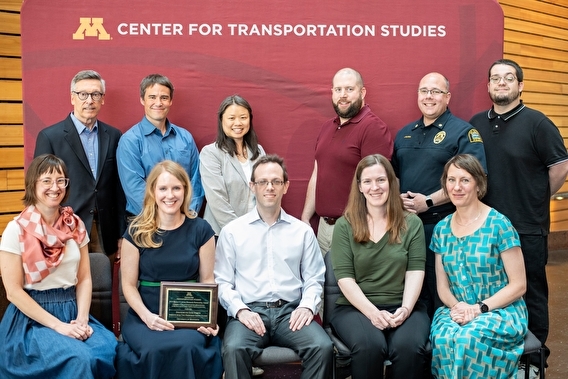 Back row, from left: Robert Johns, Ethan Fawley, HunWen Westman, Mike Klobuchar, Jeremy Ellison, Brad Drahos. Front row, from left: Fay Simer, Nichole Morris, Curtis Craig, Melissa Barnes, Amber Dallman.

|